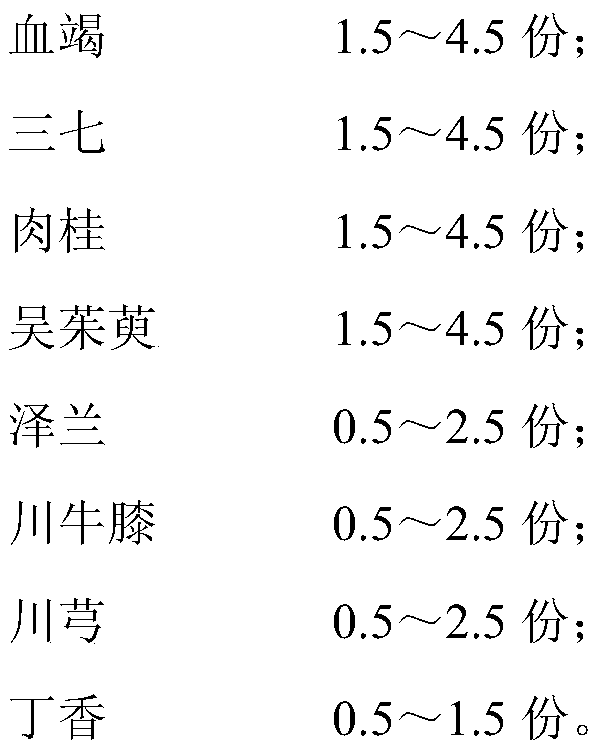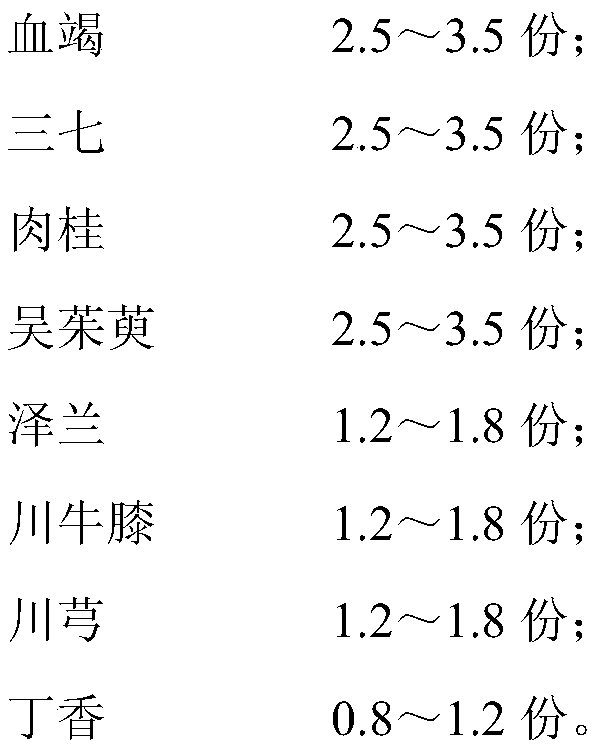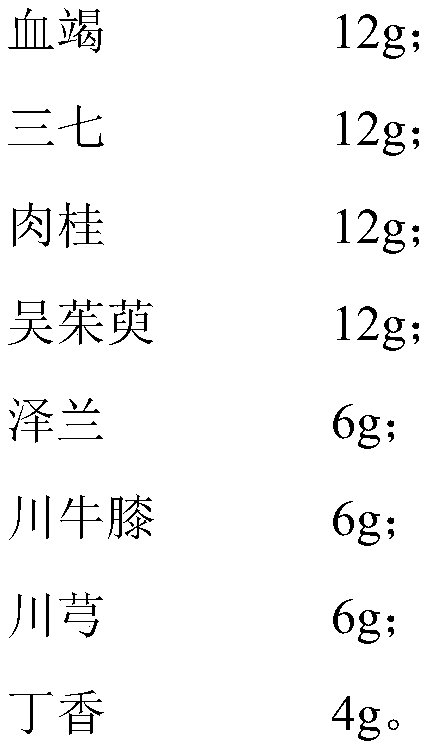A traditional Chinese medicine composition for treating primary dysmenorrhea and its preparation method and application
A technology for treating primary dysmenorrhea and drugs, applied in drug combinations, pharmaceutical formulas, medical preparations containing active ingredients, etc., can solve problems such as poor taste, high recurrence rate, troublesome decoction, etc.
- Summary
- Abstract
- Description
- Claims
- Application Information
AI Technical Summary
Problems solved by technology
Method used
Image
Examples
preparation example Construction
[0047] In principle, the preparation process of the present invention uses the "Technical Requirements for Research on the Preparation Process of New Traditional Chinese Medicines", uses modern preparation technology to extract the main active ingredients of the drug, and adds some pharmaceutically acceptable auxiliary materials or carriers.
[0048] All Chinese medicinal materials used in the examples are common commercially available products, and their specifications conform to the corresponding national pharmaceutical standards or comply with relevant regulations such as the Chinese Pharmacopoeia. All Chinese herbal medicines are decoction pieces of Chinese herbal medicines, and the origins are as follows: blood dragon (Guangdong), Panax notoginseng (Yunnan), cinnamon (Guangxi), Evodia (Guizhou), Zeilan (Liaoning), Achyranthes bidentata (Sichuan), Rhizoma Chuanxiong (Sichuan ), cloves (Hainan), salt (Shandong).
[0049] The moxa sticks used in the examples are refined moxi...
Embodiment 1
[0051] Weigh 12g of dried blood, 12g of Panax notoginseng, 12g of cinnamon, 12g of Evodia rutaecarpa, 6g of Eupatorium, 6g of Achyranthes bidentata, 6g of Chuanxiong, 4g of clove, mix them evenly, crush them into fine powder, pass through a 120-mesh sieve, and weigh 50g of fine powder Mix with 150g of roasted coarse table salt, mix well, and store at room temperature (23°C±2°C).
Embodiment 3
[0057] 1. Inclusion criteria: 120 clinically diagnosed cases of primary dysmenorrhea of qi stagnation and blood stasis type and cold-damp stagnation type, aged 16-49 years, female.
[0058] Western medicine diagnosis: primary dysmenorrhea; TCM diagnosis: dysmenorrhea (qi stagnation and blood stasis type and cold damp stagnation type). Diagnostic criteria and TCM syndrome and syndrome type standards can be based on "Chinese and Western Medicine Obstetrics and Gynecology" [Wu Keming, Zhang Qingwen. Clinical Obstetrics and Gynecology of Traditional Chinese and Western Medicine [M]. Beijing: Traditional Chinese Medicine Science and Technology Press, 2001:171] and "Chinese Medicine Gynecology" [Ma Baozhang. "Eleventh Five-Year Plan" Textbook for General Higher Education in Gynecology of Traditional Chinese Medicine [M]. Shanghai: Shanghai Science and Technology Press, 2006:92]. (1) Age of onset: It can occur in women of any age, and it is more common in puberty, usually within 1-...
PUM
| Property | Measurement | Unit |
|---|---|---|
| particle diameter | aaaaa | aaaaa |
Abstract
Description
Claims
Application Information
 Login to View More
Login to View More - R&D
- Intellectual Property
- Life Sciences
- Materials
- Tech Scout
- Unparalleled Data Quality
- Higher Quality Content
- 60% Fewer Hallucinations
Browse by: Latest US Patents, China's latest patents, Technical Efficacy Thesaurus, Application Domain, Technology Topic, Popular Technical Reports.
© 2025 PatSnap. All rights reserved.Legal|Privacy policy|Modern Slavery Act Transparency Statement|Sitemap|About US| Contact US: help@patsnap.com



